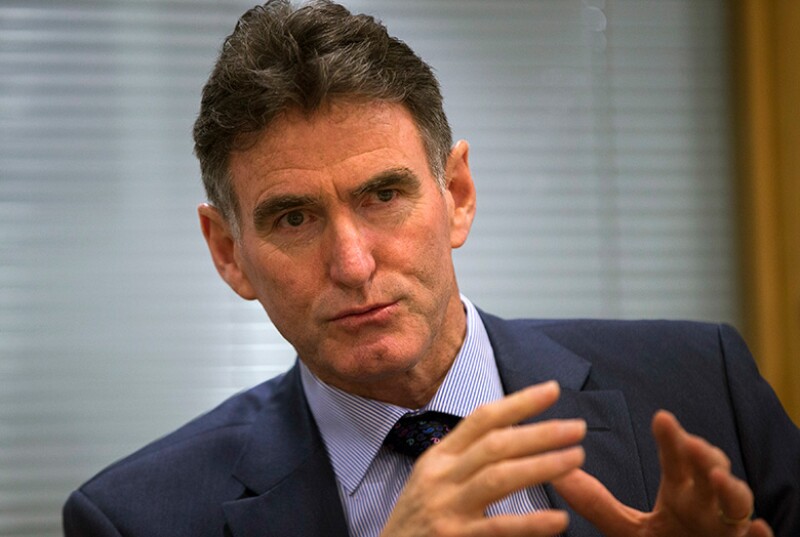
Ross McEwan: incoming NAB chief faces big challenges
 |
| ASIAMONEY 30 |
It has been quite a year for National Australia Bank. Like the rest of the country’s banking sector, the lender entered 2019 with a cloud hanging over its head, and when it finally burst, everyone, but particularly NAB, got drenched.
The Melbourne lender’s problems were part of a wider malaise. Australia’s big banks had charged fees for services that customers never received, a problem stretching back as far as 2008.
It had echoes of the profit-padding payment protection insurance charges levied by UK banks, often on unsuspecting customers.
All top bankers were under the microscope. For over a year, they twisted in their seats while they waited for Justice Kenneth Hayne to deliver his long-awaited report on the scandal.
Royal Commission
When it arrived in February 2019, the Royal Commission into Misconduct in the Banking, Superannuation and Financial Services Industry, to give it its full title, skewered some while sparing others.
Brian Hartzer, managing director and CEO of Westpac, emerged with his reputation largely intact, while Matt Comyn was able to frame himself as a change-maker.
After taking over as CEO of Commonwealth Bank of Australia in early 2018, Comyn admitted to a series of “unacceptable” failures at CBA, from financial misconduct to mass breaches of anti-money laundering laws.
He survived in effect by casting his predecessor, Ian Narev, in the role of chief villain.
Then there was National Australia Bank. Hayne’s hearings had already claimed one major scalp – NAB’s chief customer officer Andrew Hagger, for the crime of trying to make light of the bank’s behaviour.
As the clouds thickened, chief operating officer Anthony Cahill left NAB to join Visa in London.
Part of the task Ross McEwan faces is to mend the bank’s tattered public image, and that’s just for starters
When the report hit, however, all hell broke loose. Hayne’s words struck with the force of an iron fist concealed in a velvet glove. NAB, he said, “stood apart” from the other three big lenders.
Talks with CEO Andrew Thorburn and chair Ken Henry left him doubting that the “lessons of the past [had] been learned”. Nor did he believe NAB was “willing to accept… responsibility for deciding, for itself, what is the right thing to do, and then having its staff act accordingly”.
Both men briefly tried to cling on to their jobs. A day after the report landed, Thorburn sent a video to customers, promising to deliver on its recommendations.
It wasn’t enough, and within 48 hours he and his boss were gone, Thorburn admitting that NAB had “sustained damage” to its brand.
To its credit, NAB’s reaction was careful and measured. It announced the creation of a new board committee for customer outcomes, and appointed veteran banker Philip Chronican as its interim CEO.
Ross McEwan
It then went on a scouting mission, returning with a headline appointment after convincing Ross McEwan, credited with turning around the UK’s RBS, to return to Australia.
The New Zealand-born banker, who had held senior roles at CBA before departing for London, will start his new job as CEO of National Australia Bank by no later than April 2020, with Chronican moving upstairs to become chairman. In a research note published in July 2019, JPMorgan said the appointment gave investors “additional confidence in NAB’s medium- and long-term outlook”.
So far, McEwan, who returned RBS to profit during his tenure, has made all the right noises.
He promised to “protect and accelerate the bank’s transformation programme”, and to deliver a “higher level of accountability and transparency”. And he pointed to several areas where he believes NAB can extend its lead in its home market, including in business banking, agriculture and health.
But his work has started already. Part of the task he faces is, of course, to mend the bank’s tattered public image, and that’s just for starters.
In April 2019, NAB put aside A$1.1 billion ($750 million) to pay aggrieved customers. In the three months to the end of June 2019, the bank reported flat quarterly cash profit, and warned that provisions relating to the fee-charging scandal were likely to rise in the second half of the year, heaping further pressure on margins.
Worse, the storm clouds are refusing to disperse. A two-year-long property slump and China’s growth woes are starting to filter through to the wider economy, with output in the first quarter of the year expanding at its slowest rate since 2009.
McEwan arrived at RBS with the UK lender at a low ebb, and he’ll have another big job on his hands turning National Australia Bank around. Out of the frying pan, into the fire.